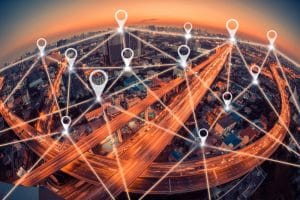When machine learning and streaming data meet
- by 7wData

I recently started using a task automation app on my smartphone to automate many of the settings I had been changing manually. Most of these settings revolved around my current location. When at home, I connect to my wireless network to avoid monthly data overages on my smart phone plan. I also connect to my Bluetooth earpiece for hands-free talking, turning the volume up for calls and notifications. When I leave the house, I disconnect and disable both Wi-Fi and Bluetooth for security purposes. I also switch all volume settings to silent with vibrate.
The automation app uses GPS sensor data to periodically check where I am, and it adjusts these settings as my location changes. As useful as this automation is, it still relies on user input. And this means I have to configure the automation algorithm myself, teaching it to understand and implement my preferences.
This pales in comparison to the potential of machine Learning, where computer algorithms learn without explicitly being programmed (beyond perhaps a training model with basic rules to frame the learning process). Such algorithms learn autonomously as they’re iteratively exposed to more data.
Machine Learning itself is not a new concept. Machines learned to play (and consistently beat human champions at) checkers in the 1950s, chess in the 1990s, Jeopardy! earlier this decade, and the complex ancient Chinese game Go last year. Recent history has also super-powered machine learning with rapid advancements in compute power, data storage, parallel processing, network bandwidth and high-speed connectivity. And over the years, machines have also learned to do a lot more than just play games with humans. In fact, machine learning has progressed to the point where it’s challenging the role humans play.
In traditional analysis, a human selects a model they believe best fits a collection of data. I believe humans will remain an essential element of analytics – and while a human analyst might create one or two good models a week, machine learning is capable of creating thousands of good models per week. This is why machine learning is one of the leading drivers of the evolution of analytics – especially when it’s paired with streaming data, which shortens learning cycles and increases the number of iterations that can be rapidly processed.
[Social9_Share class=”s9-widget-wrapper”]
Upcoming Events
Shift Difficult Problems Left with Graph Analysis on Streaming Data
29 April 2024
12 PM ET – 1 PM ET
Read MoreYou Might Be Interested In
Apply good data science to outthink competitors’ marketing
29 Sep, 2016Marketing departments quickly adopted big data analytics and obtained good results. Many companies—such as Amazon and its noteworthy and effective …
The success of any analytics team starts with earning trust
18 May, 2018A wise speaker I heard recently said, “We are human, which means we make emotional decisions first, then justify them …
Leverage your marketing data: 9 FAQs to get you started
24 Jul, 2016Remember the year of mobile? (Could have been 2013, 2014 or 2015, depending on how early an adopter you were.) …
Recent Jobs
Do You Want to Share Your Story?
Bring your insights on Data, Visualization, Innovation or Business Agility to our community. Let them learn from your experience.
Privacy Overview
Get the 3 STEPS
To Drive Analytics Adoption
And manage change




